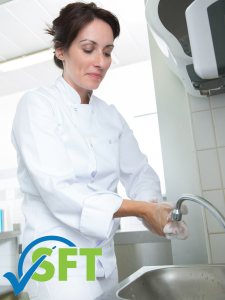Don’t let foodborne illness be the main event this Fourth of July! For any food truck owner, this is one of the most profitable days. However, with massive crowds and soaring temperatures comes a significant responsibility to keep your customers safe. As a certified food protection manager and trusted mobile food vendor in Minnesota, your success on this hectic holiday hinges on one critical element: impeccable food truck safety.
The combination of high volume, summer heat, and the fast-paced environment creates the perfect storm for foodborne pathogens to thrive. This is where your professional training comes into play. Prioritizing the rules of food truck temperature control in hot weather and MN food safety isn’t just about compliance; instead, it’s about protecting your customers, staff, and reputation. Let’s break down the three key areas you must master to ensure your 4th of July is both successful and safe.
Mastering Temperature in Extreme Heat

The single greatest threat to your food on a hot summer day is the temperature “danger zone.” The Minnesota Food Code clearly states: hold cold foods at or below 41°F, and keep hot foods at or above 135°F. When food sits between these two temperatures, bacteria like Salmonella and E. coli can double in number in as little as 20 minutes. Your truck’s refrigeration units have to work overtime on a hot July day, making constant vigilance essential.
- Calibrate and monitor: Before you leave, ensure that you or your certified food protection manager calibrates and inspects all refrigerators, freezers, and hot-holding units. Place thermometers in the warmest part of each cold unit and check temperatures at least every two hours.
- Limit Door Openings: Every time you open a cooler door, cold air escapes and warm air rushes in, forcing the unit to work harder. Organize your coolers so you can grab what you need quickly without leaving the door open for extended periods.
- Use Ice Strategically: Pack beverage tubs or temporary coolers with enough ice to keep items fully submerged and at a temperature below 41°F. Keep in mind that ice melts quickly in direct sunlight.
Winning the War on Cross-Contamination



The tight quarters of a food truck make preventing cross-contamination both more challenging and more important. During a high-volume rush, it’s easy for standards to slip. As the certified food protection manager, you must enforce strict protocols to prevent the transfer of harmful bacteria from raw foods to ready-to-eat items.
- Impeccable Handwashing: This is your first line of defense. Ensure your handwashing station is always stocked with soap, paper towels, and warm running water. Staff must wash their hands after handling raw meat, using the restroom, touching their face, or handling money.
- Dedicated Surfaces and Utensils: Use color-coded cutting boards and separate utensils for raw meats, poultry, and produce to ensure food safety. In a small space, this visual cue system is invaluable for preventing dangerous mix-ups.
- Proper Glove Use: Gloves can provide a false sense of security. Train your staff to change gloves between tasks, especially after handling raw proteins or any time they become torn or contaminated.
Protecting Your Team from Heat Exhaustion



A key component of food truck temperature control in hot weather and MN food safety is ensuring your staff is safe. A food truck in July is essentially a metal box sitting in the sun. Dehydration or heat exhaustion puts your team’s health at risk and compromises their ability to follow critical food safety procedures.
- Mandate Hydration Breaks: The heat inside a truck can be intense. Require your team to take frequent, short breaks in a shaded area and drink water every 15-20 minutes, even if they don’t feel thirsty.
- Recognize the Symptoms: Train your staff to recognize the signs of heat exhaustion in themselves and their coworkers. These include dizziness, heavy sweating, nausea, headache, and weakness.
- Provide Cooling Measures: If possible, have a fan directed at the work area and provide cooling towels for your staff. A healthy, alert team is a team that can handle food safely.
By focusing on these critical areas, you can ensure that the only fireworks on the 4th of July are the ones in the sky.
Your commitment to the highest standards of food safety protects everyone. If you or your team needs to renew your credentials or get certified, Safe Food Training offers expert, instructor-led options tailored for the certified food protection manager in Minnesota. Book your continuing education or initial certification training today!










